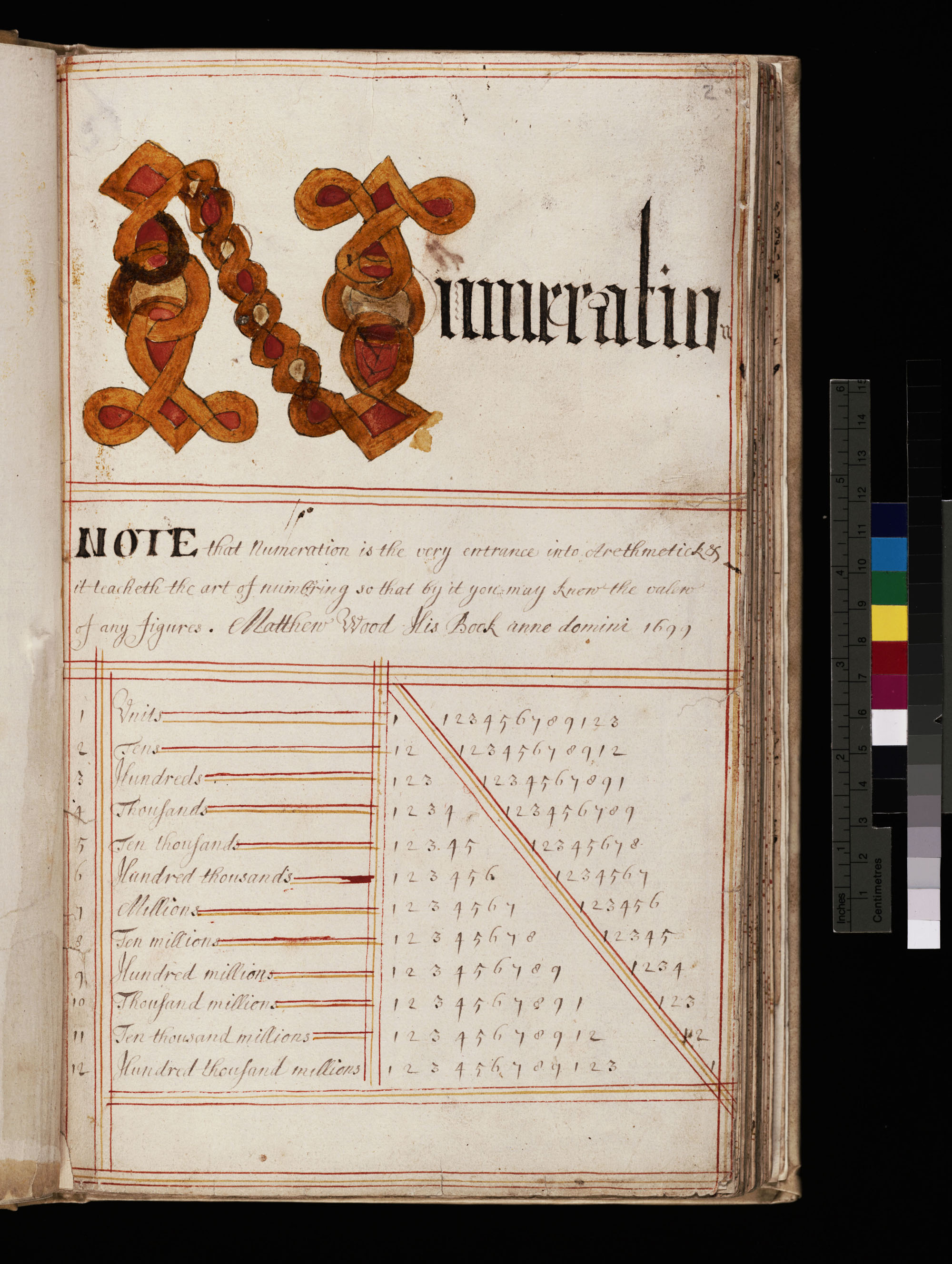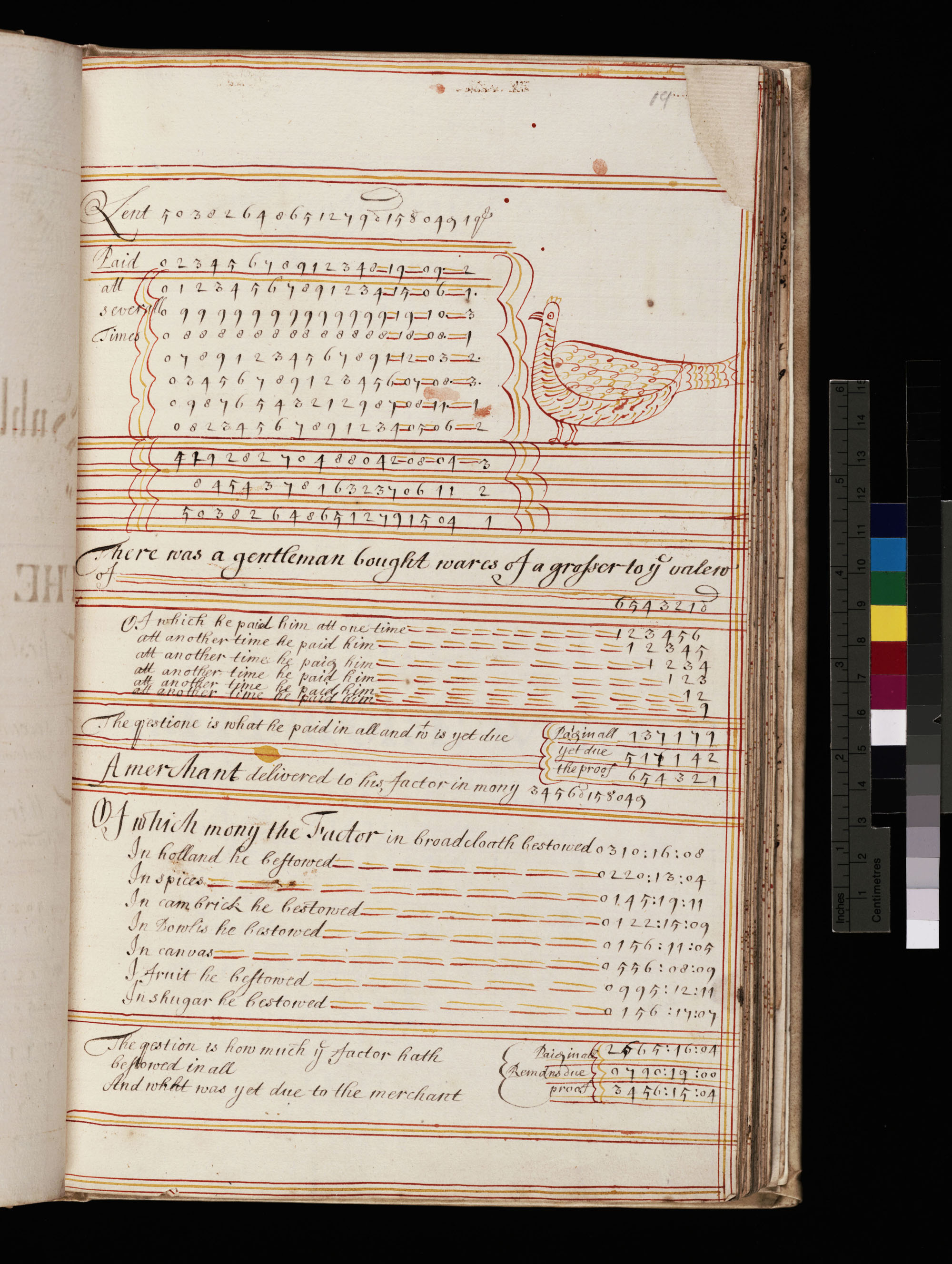- About MAA
- Membership
- MAA Publications
- Periodicals
- Blogs
- MAA Book Series
- MAA Press (an imprint of the AMS)
- MAA Notes
- MAA Reviews
- Mathematical Communication
- Information for Libraries
- Author Resources
- Advertise with MAA
- Meetings
- Competitions
- Programs
- Communities
- MAA Sections
- SIGMAA
- MAA Connect
- Students
- MAA Awards
- Awards Booklets
- Writing Awards
- Teaching Awards
- Service Awards
- Research Awards
- Lecture Awards
- Putnam Competition Individual and Team Winners
- D. E. Shaw Group AMC 8 Awards & Certificates
- Maryam Mirzakhani AMC 10 A Awards & Certificates
- Two Sigma AMC 10 B Awards & Certificates
- Jane Street AMC 12 A Awards & Certificates
- Akamai AMC 12 B Awards & Certificates
- High School Teachers
- News
You are here
Mathematical Treasure: Matthew Wood's Copybook
In 17th- and 18th-century Britain, some people took pride in compiling their own handwritten books. These copybooks represented a personal view toward the subjects under consideration. They were often ornately decorated and embellished with calligraphy. Matthew Wood compiled such a book in 1699 and titled it “Numeration: treatise on arithmetic.” On his introductory page, he told the reader,
Seven friends supremely excellent are the stars in wisdom’s firmament. Whereof arithmetic is one most worth.
Here he was referring to the seven liberal arts of the medieval curriculum.

On the page shown above, titled "Numeration," Wood noted that:
Numeration is the very entrance into Arithmeticks. It teaches the art of numbering, so that by it you may know the value of any figures.
He then graphically demonstrated the increase of place value as the tens denominations of numbers increased. Numeration at this time was considered a separate mathematical operation in arithmetic. Note that on this chart there is no term “billion” but rather “1000 million.”

On the page above, Wood gave examples of using addition and subtraction in the same problem to determine value given and value received. He recorded monetary results in pounds : shillings : pence; thus 220 : 13 : 04 reads as 220 pounds, 13 shillings, and 4 pence. Besides instruction in arithmetic, the book also contains numerous tables for monetary, liquid, and weight conversions. Most likely, the work was intended for use by a merchant.
For another example of a 17th-century copybook, see the Convergence page, "Mary Serjant's Copybook."
For examples of 18th-century British copybooks, see the Convergence article, “Learning Geometry in Georgian England,” by Benjamin Wardhaugh (August 2012).
These two images are provided courtesy of the Beinecke Rare Book and Manuscript Library, Yale University. You may use them in your classroom; all other uses require permission from the Beinecke Library. The Mathematical Association of America is pleased to cooperate with the Beinecke Library and Yale University to make these images available to a larger audience.
Frank J. Swetz (The Pennsylvania State University), "Mathematical Treasure: Matthew Wood's Copybook," Convergence (August 2013), DOI:10.4169/loci003931




